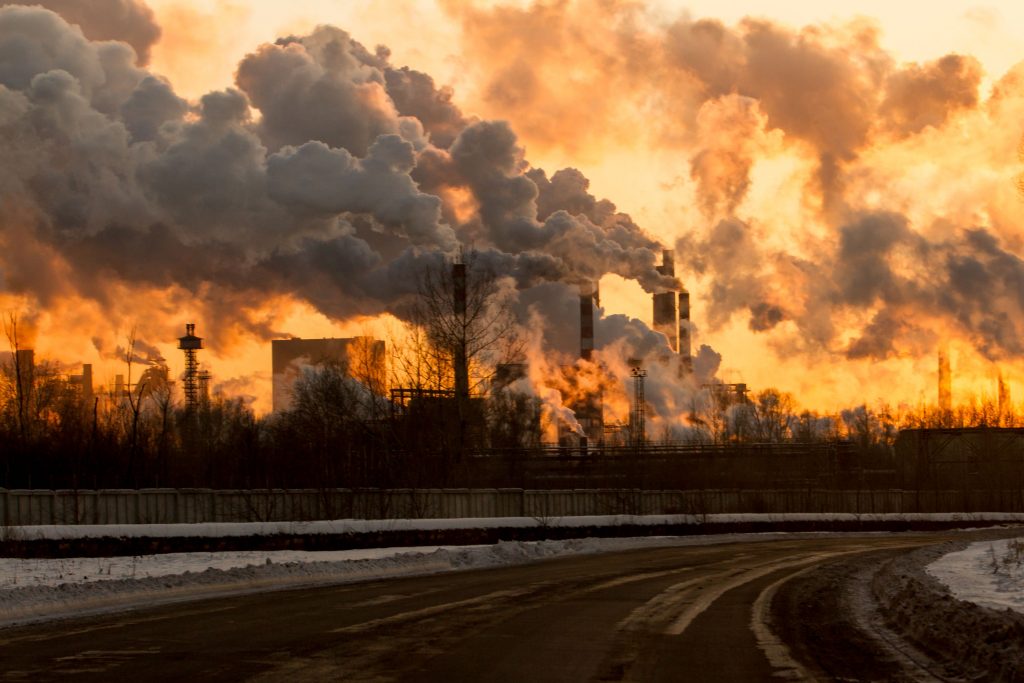Naturopathic Perspective
JACOB SCHOR, ND, FABNO
Among psychologists and those who keep up with those sorts of things, that “cup half-full” business is called “cognitive reframing.” This refers to the psychological technique of identifying and then disputing irrational or maladaptive thoughts; it’s a way of viewing and experiencing events, ideas, and concepts that promotes more positive interpretations. Basically, it’s learning to reinterpret things and look at the bright side.
An American psychiatrist named Aaron Temkin Beck, who is given credit for developing both cognitive therapy and cognitive behavioral therapy, gave us the term “reframing,” though it’s hard to imagine the idea really needed inventing. The world has always included people who were born perversely cheerful – people who naturally, or oddly, just see everything in a positive light.
For those of us for whom cheerfulness does not come naturally, this Covid-19 epidemic provides a great opportunity for us to practice reframing. We are all aware of the standard view of what’s happened: The pandemic has been racing through the world, killing hundreds of thousands of people, throwing the global economy into the worst recession in history, and destroying civilization as we know it. That’s not even being catastrophic or opening up a Pandora’s box of negative thinking.
A Global Experiment
Rather than repeating the mantra, “If we don’t flatten the curve, we are all going to die,” try on this perspective: We are engaged in a global experiment to test how reducing air pollution can save lives and lead to a cleaner future.
Some recently published studies on the subject helped inform my opinion back in March as we began staying home in Covid-Lockdown mode. And it turns out that this whole social distancing thing we have been doing (especially in the initial phase of the pandemic) has had a striking side effect: air pollution levels have been falling dramatically as people the world over have engaged in lockdown measures in an attempt to slow the virus.1
The strongest evidence in support of such happy thoughts is the research related to heart disease. A large study by Wang and colleagues, published in February 2019, analyzed data from some 53 million US Medicare beneficiaries (thus aged >65), which were collected from 2000 to 2008, (and which adds up to approximately 4 billion person-months of follow-up data).2 They combined each individual’s address and ZIP code to obtain data from the EPA. Then, using meteorological and geo-temporal models, they calculated individual exposure to PM2.5 over that 8-year period. (PM2 are ultra-small particulates – the teensiest inhalable particles, with diameters that are generally 2.5 micrometers or smaller.) Wang et al compared this calculated PM2.5 exposure against disease-specific and all-cause mortality using Cox proportional models.2
In the end, Wang et al reported that increases in PM2.5 correlated with increased mortality from cardiovascular disease (CVD), respiratory disease, and cancer (with the exception of lung cancer).2 A 10 μg/m3 increase in average PM2.5 in the 12 months prior to death was associated with a 5% increase in all-cause mortality, as well as an 8.8% increase in all CVD deaths, a 5.6% increase in all respiratory deaths, and a 2.5% increase in all cancer deaths. PM2.5-mortality associations for CVD- and respiratory-related causes were positive and significant for beneficiaries irrespective of their sex, race, age, socioeconomic status (SES) and urbanicity, with no evidence of a lower threshold for response or of lower risk ratios at lower PM2.5 levels. Associations between PM2.5 and CVD and respiratory mortality were higher for younger, Black, and urban beneficiaries.2
Another large study to justify some optimism is Pranata’s review and meta-analysis of past studies on air pollution and CVD mortality, published in March 2020 in the Journal of Evidence Based Medicine.3 Data from 84 cohorts, comprising more than 28 million subjects, were combined. Increases in fine particulate air pollutants were associated with increases in all measures of CVD, acute coronary events, stroke, and hypertension. Mortality rates from CVD increased by 10% for the PM2.5 increases and by 17% when the larger PM10 particles were tracked. Increases in nitric dioxide (NO2) were associated with a 17% increase in CVD mortality and a 23% increase in all-cause mortality.3
I should also mention a paper by Hayes et al, published in July 2019.4 Hayes found that each 10 μg/m3 increase in PM2.5 was associated with a 16% increase in mortality from ischemic heart disease and a 14% increase in mortality from stroke. Any of these papers would be sufficient to predict that changes in air pollution influence current disease rates.
Health Effects of Pollution
I was first introduced to the impact of air pollution on our health by the late Walter Crinnion, ND. At the time, in 2015, the WHO estimated that air pollution accounted for 1.3 million deaths worldwide every year. Dr Crinnion wrote a review article on air pollution and concluded, “It is quite possible that one of the most effective preventive medicine modalities would be the installation of a high-quality air purifier in the home.”5
I thought he had exaggerated the benefits, but I’ve had to cast aside those doubts. We’ve reviewed multiple studies on air pollution since then that suggest an association with a wide range of health conditions. In the monthly “Abstracts and Commentary” section, the Natural Medicine Journal has listed studies that report associations between PM2.5 and obesity,6 diabetes,7 anxiety,8 suicide,9 psychosis,10 low birth weights,11 decreased cognitive performance,12 all-cause mortality,13 lung infections,14 and atherosclerosis.15
The strongest associations, though, have consistently been with CVD. Acute exposure to diesel exhaust causes vascular dysfunction, thrombosis, and myocardial ischemia in both healthy individuals and patients with coronary heart disease.16 Long-term exposure to particulate air pollution is linked with development and progression of atherosclerosis in both animals and humans.17 Miller et al provided evidence for the mechanism underlying this association in 2017.18 Inhaled particles deposit deep in the lungs and trigger oxidative stress and inflammation. The nanoparticles then penetrate the alveolar epithelium, translocate into the circulation, and accumulate at sites of vascular inflammation. How readily the particles translocate depends on their size: the smaller the particle, the easier time they have of translocating and accumulating.19
The range of prognostic numbers we find in these papers by Wang, Pranata, Hayes, and others might be used when looking at our recent lockdown. The range of predictive numbers mentioned in these papers varies, from a 5% increase in all-cause mortality (Wang), to a 10% increase in CVD mortality (Pranata) and a 16% increase in mortality from ischemic heart disease (Hayes). There is also Pope et al: In 2015 they reported that a similar increase in fine particulate levels was associated with a 12% increase in CVD deaths.20
Global Pandemic Effects
In an article posted in early March on the academic website G-Feed, Marshall Burke – a professor at Stanford’s Environmental Earth Systems Science Department – calculated that the decreased air pollution in China this past winter may have saved 20 times more lives than were lost due to the Covid-19 infection in that country.21 Now, that is certainly one optimistic view of a disaster. Neither Pranata nor Wang had been published when Burke was doing his calculations.
Burke utilized the 2016 findings from Su et al,22 who had analyzed data collected during the 2008 Summer Olympics and Paralympic Games. Recall how China went to great efforts to reduce ambient air pollution during the games by restricting traffic and shutting down pollution sources. Burke estimated that the current shutdown in response to Covid-19 resulted in “… about a 10µg/m3 reduction in PM across China in Jan-Feb of 2020 relative to the same months in the previous 2 years.”21 He et al had reported “… that a 10 percent decrease in concentrations reduces the monthly standardized all-cause mortality rate by 8 percent.”23
Burke writes, “Putting these numbers together … yields some very large reductions in premature mortality. … I calculate that having 2 months of 10µg/m3 reductions in PM2.5 likely has saved the lives of 4,000 kids under 5 and 73,000 adults over 70 in China.”21
Meanwhile, the European Union’s Copernicus Atmosphere Monitoring Service used satellite observations over large parts of China to compare the monthly PM2.5 average for February 2020 with those for February 2017, 2018, and 2019. On April 3, 2020, they announced their findings: A 20-30% reduction in surface PM2.5 in February 2020.24
In an update on May 8, 2020, Bauwens et al reported that average NO2 levels dropped an average of 40% over all Chinese cities relative to the same time period in 2019 and that the decrease was greater in the cities harder hit by disease and lockdowns. In Western Europe and the United States, levels dropped 20-38%.25 Carbon monoxide concentrations above New York City fell to half of their 2019 levels.26
PM2.5 levels have dropped even more. On April 22, 2020, CNBC reported that New Delhi had recorded a 60% fall of PM2.5 compared with 2019 levels, Seoul registered a 54% drop, while PM2.5 in Wuhan dropped by 44%.27
Healthier Hearts?
There have been hints of a concomitant sudden drop in heart disease incidence, though few if any commentators have associated this decrease in morbidity with air pollution.
Spain’s cardiologists reported a 40% drop in emergency cardiac procedures early in the Spring.28 Harlan Krumholz, MD, writing in the NY Times on April 6, 2020, also reported a dramatic drop in patients entering his hospital for heart problems. He estimated a 40-60% reduction in hospital admissions for heart attacks.29
In mid-May, Kaiser Permanente reported a nearly 50% drop in heart attack admissions in its Northern California hospitals.30
In March, hospital admissions for one type of serious heart attack (STEMI activated catherization) fell by 38% in 9 major US hospitals.31 Yale also reported a nearly 40% drop in their heart attack patients.32 By mid-April, the Washington Post was reporting that local hospitals were empty of heart attack patients. They were bewildered as to why: “Those results – from hospitals across the country – are counterintuitive, physicians say. The stress caused by the pandemic would lead them to anticipate an increase in heart attacks. Covid-19 is also an inflammatory disease that can damage the heart muscle.”33
Reasons to Be Hopeful
A friend stopped by to visit the other day, suitably masked and distanced, standing on the sidewalk in front of our home. He’s an interventional cardiologist with free time on his hands. He’s thinking about building a canoe. His explanation for his decreased workload is that people are simply afraid to enter a hospital these days.
This opinion is echoed by Sandeep Jahuar, the cardiologist who wrote the excellent book, The Heart, a History. In a recent opinion piece in the NY Times, he points out that while many patients with chronic health conditions have foregone their routine medical care, few are much worse off for it.34 Although nearly half had postponed routine medical care, 86% said their health had stayed the same, and only 11% had worsened.35 He lists all sorts of possible explanations, including overtreatment, but omits any mention of the change in air quality we’ve all enjoyed.
I can understand why patients are hesitant to go to the hospital these days. Even as I write this, we’re on the phone postponing my annual “Wellness Visit” with my own doctor; however, the symptoms of a heart attack might be more difficult to ignore. It makes more sense to view the decrease in heart attacks during our lockdown period as a benefit of lower PM2.5 levels.
We naturopathic sorts have always put a high value on a clean world. This is our chance to prove that it is worthwhile to make the needed efforts. We’re part of a large experiment; we need to be patient until the data can be collected and analyzed.
Nearly 650 000 people die of CVD in the United States each year.36 If staying at home dropped PM2.5 by 10 ug/m3, and this in turn lowered CVD deaths by 10%, then CVD deaths could decrease by 65 000. Pranata’s team predicted that a 16% decrease might save over 103 000 lives per year. Unfortunately, our experiment has been confounded by other concurrent events. The EPA has been rapidly rolling back pollution enforcement rules during the same time period, and it may be difficult to account for the resultant harm by these efforts when balanced against the health improvements from cleaner air.
I’m far from perfect at this whole reframing thing, and though I spend some of the day relishing how blue the sky has become, I also spend time experiencing a level of anxiety similar to if I were playing Russian roulette. Looking on the bright side of things takes practice. This plague has certainly provided plenty of opportunity. Yet, with practice, think of all the things we used to worry about and how easy it is going to be to reframe them in the future.
References:
- BBC News. Coronavirus: Nasa images show China pollution clear amid slowdown. February 29, 2020. Available at: https://www.bbc.com/news/world-asia-51691967. Accessed June 15, 2020.
- Wang B, Eum KD, Kazemiparkouhi F, et al. The impact of long-term PM2.5 exposure on specific causes of death: exposure-response curves and effect modification among 53 million U.S. Medicare beneficiaries. Environ Health. 2020;19(1):20.
- Pranata R, Vania R, Tondas AE, et al. A time-to-event analysis on air pollutants with the risk of cardiovascular disease and mortality: A systematic review and meta-analysis of 84 cohort studies. J Evid Based Med. 2020;13(2):102-115.
- Hayes RB, Lim C, Zhang Y, et al. PM2.5 air pollution and cause-specific cardiovascular disease mortality. Int J Epidemiol. 2020;49(1):25-35.
- Crinnion W. Air Pollution, Disease, and Mortality: Particulate matter as a global health threat. Natural Medicine Journal. 2015;7(91):6-15. Available at: https://www.naturalmedicinejournal.com/journal/2015-09/air-pollution-disease-and-mortality. Accessed June 15, 2020.
- Alderete TL, Habre R, Toledo-Corral CM, et al. Longitudinal Associations Between Ambient Air Pollution With Insulin Sensitivity, β-Cell Function, and Adiposity in Los Angeles Latino Children. Diabetes. 2017;66(7):1789-1796.
- Solimini AG, D’Addario M, Villari P. Ecological correlation between diabetes hospitalizations and fine particulate matter in Italian provinces. BMC Public Health. 2015;15:708.
- Power MC, Kioumourtzoglou MA, Hart JE, et al. The relation between past exposure to fine particulate air pollution and prevalent anxiety: observational cohort study. BMJ. 2015;350:h1111.
- Bakian AV, Huber RS, Coon H, et al. Acute air pollution exposure and risk of suicide completion. Am J Epidemiol. 2015;181(5):295-303.
- Newbury J, Arseneault L, Beevers, S, et al. Association of air pollution exposure with psychotic experiences during adolescence. JAMA Psychiatry. 2019;76(6):614-623.
- Smith RB, Fecht D, Gulliver J, et al. Impact of London’s road traffic air and noise pollution on birth weight: retrospective population based cohort study. BMJ. 2017;359:j5299.
- Zhang X, Chen X, Zhang X. The impact of exposure to air pollution on cognitive performance. Proc Natl Acad Sci U S A. 2018;115(37):9193-9197.
- Di Q, Dai L, Wang Y, et al. Association of short-term exposure to air pollution with mortality in older adults. JAMA. 2017;318(24):2446-2456.
- Horne BD, Joy EA, Hofmann MG, et al. Short-term elevation of fine particulate matter air pollution and acute lower respiratory infection. Am J Respir Crit Care Med. 2018;198(6):759-766.
- Miller MR, Raftis JB, Langrish JP, et al. Inhaled nanoparticles accumulate at sites of vascular disease. ACS Nano. 2017;11(5):4542-4552.
- Lucking AJ, Lundback M, Mills NL, et al. Diesel exhaust inhalation increases thrombus formation in man. Eur Heart J. 2008;29(24):3043-3051.
- Brook RD. Cardiovascular effects of air pollution. Clin Sci (Lond). 2008;115(6):175-187.
- Miller MR, Shaw CA, Langrish JP. From particles to patients: oxidative stress and cardiovascular effects of air pollution. Future Cardiol. 2012;8(4):577-602.
- Hussain M, Wu D, Saber AT, et al. Intratracheally instilled titanium dioxide nanoparticles translocate to heart and liver and activate complement cascade in the heart of C57BL/6 mice. Nanotoxicology. 2015;9(8):1013-1022.
- Pope CA 3rd, Turner MC, Burnett RT, et al. Relationships between fine particulate air pollution, cardiometabolic disorders, and cardiovascular mortality. Circ Res. 2015;116(1):108-115.
- Burke M. COVID-19 reduces economic activity, which reduces pollution, which saves lives. March 8, 2020. Global Food, Environment and economic Dynamics. G-Feed Web site. Available at: http://www.g-feed.com/2020/03/covid-19-reduces-economic-activity.html. Accessed June 15, 2020.
- Su C, Hampel R, Franck U, et al. Assessing responses of cardiovascular mortality to particulate matter air pollution for pre-, during- and post-2008 Olympics periods. Environ Res. 2015;142:112-122.
- He G, Fan M, Zhou M. The effect of air pollution on mortality in China: Evidence from the 2008 Beijing Olympic Games. J Environ Econ Manage. 2016;79:18-39.
- Atmosphere Monitoring Service. Amid Coronavirus outbreak: Copernicus monitors reduction of particulate matter (PM2.5) over China. April 3, 2020. Available at: https://atmosphere.copernicus.eu/amid-coronavirus-outbreak-copernicus-monitors-reduction-particulate-matter-pm25-over-china. Accessed June 16, 2020.
- Bauwens M, Compernolle S, Stavrakou T, et al. Impact of coronavirus outbreak on NO2 pollution assessed using TROPOMI and OMI observations. Geophys Res Lett. 2020 May 8: e2020GL087978. doi: 10.1029/2020GL087978 [Epub ahead of print]
- Levitan D. Will the Earth ‘Remember’ the Coronavirus Pandemic? May 25, 2020. Scientific American. Available at: https://www.scientificamerican.com/article/will-the-earth-remember-the-coronavirus-pandemic1/. Accessed June 16, 2020.
- Meredith S. Coronavirus lockdowns have led to an unprecedented fall in air pollution for these major cities. April 22, 2020. CNBC Web site. https://www.cnbc.com/2020/04/22/coronavirus-air-pollution-has-fallen-dramatically-for-these-cities.html. Accessed June 16, 2020.
- Rodríguez-Leor O, Cid-Álvarez B, Ojeda S, et al. Impact of the COVID-19 pandemic on interventional cardiology activity in Spain. REC: Interventional Cardiology. 2020;2:82-89. Available at: https://www.recintervcardiol.org/es/?option=com_content&view=article&id=344&catid=14. Accessed June 16, 2020.
- Krumholz HM. Where Have All the Heart Attacks Gone? April 6, 2020. NY Times. Available at: https://www.nytimes.com/2020/04/06/well/live/coronavirus-doctors-hospitals-emergency-care-heart-attack-stroke.html. Accessed June 16, 2020.
- Solomon MD, McNulty EJ, Rana JS, et al. The Covid-19 Pandemic and the Incidence of Acute Myocardial Infarction. N Engl J Med. 2020;10.1056/NEJMc2015630. doi:10.1056/NEJMc2015630. [Epub ahead of print]
- Garcia S, Albaghdadi MS, Meraj PM, et al. Reduction in ST-Segment Elevation Cardiac Catheterization Laboratory Activations in the United States During COVID-19 Pandemic. J Am Coll Cardiol. 2020;75(22):2871-2872.
- MacMillan C. Hospitals Report Fewer Heart Attacks and Strokes Amid COVID-19. May 6, 2020. Yale Medicine. Available at: https://www.yalemedicine.org/stories/hospitals-covid-fears/. Accessed June 16, 2020.
- Bernstein L, Sellers FS. Patients with heart attacks, strokes and even appendicitis vanish from hospitals. April 19, 2020. Wash Post. Available at: https://www.washingtonpost.com/health/patients-with-heart-attacks-strokes-and-even-appendicitis-vanish-from-hospitals/2020/04/19/9ca3ef24-7eb4-11ea-9040-68981f488eed_story.html. Accessed June 16, 2020.
- Jauhar S. People Have Stopped Going to the Doctor. Most Seem Just Fine. June 22, 2020. NY Times. Available at: https://www.nytimes.com/2020/06/22/opinion/coronavirus-reopen-hospitals.html. Accessed June 24, 2020.
- Lawrence E. Nearly Half Of Americans Delayed Medical Care Due To Pandemic. May 27, 2020. Kaiser Health News. Available at: https://khn.org/news/nearly-half-of-americans-delayed-medical-care-due-to-pandemic/. Accessed June 24, 2020.
- Centers for Disease Control and Prevention. Heart Disease Facts. Last reviewed June 22, 2020. CDC Web site. https://www.cdc.gov/heartdisease/facts.htm. Accessed June 24, 2020.

Jacob Schor, ND, FABNO, graduated from NCNM in 1991 and has practiced in Denver, CO, ever since. He has been active in state association politics, taking his turn as president of the Colorado Association of Naturopathic Doctors and Legislative Chair. Dr Schor has also held leadership positions in the Oncology Association of Naturopathic Physicians, served on the AANP Board of Directors, and chaired the AANP’s speaker selection committee. For the past decade he has been the Associate Editor of the Natural Medicine Journal, and is a regular contributor to the Townsend Letter.





